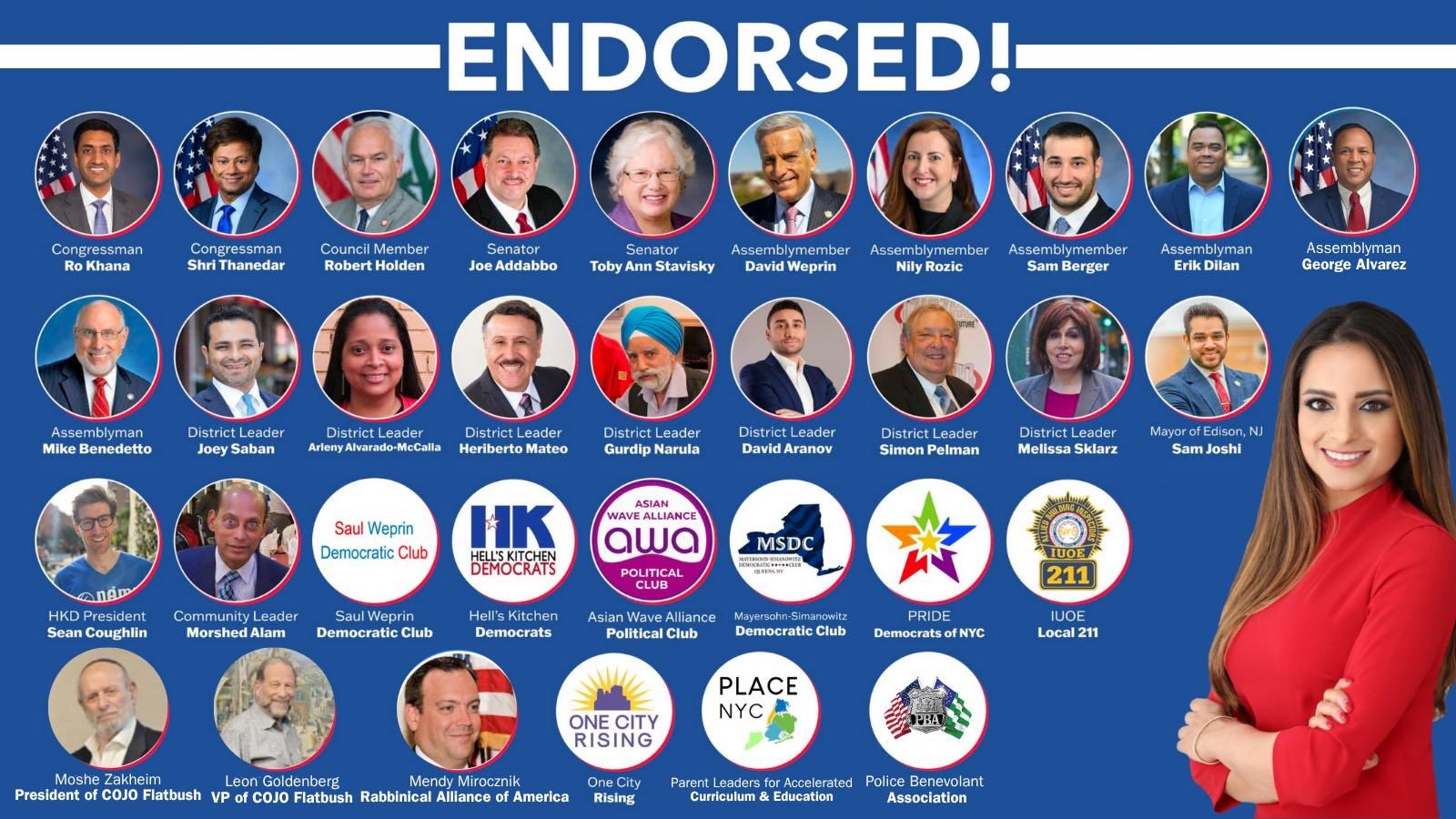Proud to be endorsed by leaders in all 5 boroughs and across the Country—because New Yorkers are ready for a Public Advocate who shows up. Not a Public Absentee.
— Jenifer Rajkumar (@JeniferRajkumar) May 29, 2025
This is a people-powered race—and your vote can flip this City. #MadamAdvocate #NoDaysOff pic.twitter.com/qEAO1fhEuD
- Hyperloop-Enabled Tri-State Metro: Replace the aging subway and commuter rail with a high-speed, electric hyperloop network connecting NYC, Long Island, Westchester, and Northern New Jersey. Travel from Newark to Midtown in 8 minutes; from Montauk to Manhattan in 45. Powered by renewable energy, this system will be the fastest, cleanest metro in the world, with zero-emission pods running at 700 mph.
- Smart Roads and Autonomous Transit: Retrofit streets for autonomous electric buses and shuttles, reducing congestion by 40%. Embed sensors for real-time traffic management, cutting commute times by 25%. Pedestrianize 50% of Manhattan’s streets, creating green corridors with bike lanes and urban forests.
- Resilient Utilities: Upgrade the power grid to a decentralized, solar-and-wind-powered smart grid. Bury all utility lines to protect against storms. Build desalination plants to secure water supply, preparing for climate-driven shortages.
- Free Transit for All: Subsidize fares through a progressive wealth tax on properties over $10 million, generating $20 billion annually. Free transit boosts ridership, reduces car dependency, and cuts emissions by 30%.
- 24/7 High-Frequency Service: Trains and buses every 3-5 minutes, all day, every day. Expand bus rapid transit (BRT) with dedicated lanes across all boroughs.
- Accessibility Overhaul: Retrofit every station for full ADA compliance. Deploy AI-powered navigation apps for real-time updates in 20 languages, ensuring inclusivity for all.
- Tech Innovation Hub: Create “Silicon Harbor” in Brooklyn and Queens, a 100-acre campus for AI, biotech, and green tech startups. Offer tax breaks and grants to attract 5,000 startups by 2035, creating 200,000 high-paying jobs. Partner with universities like NYU and Columbia to fund R&D.
- Universal Basic Income Pilot: Launch a $1,000/month UBI for 500,000 low-income residents, funded by congestion pricing and luxury taxes. This boosts local businesses and reduces poverty by 20%.
- Worker-Owned Cooperatives: Incentivize co-ops in retail, construction, and tech with low-interest loans. By 2035, 10% of NYC businesses will be worker-owned, fostering equitable wealth distribution.
- Metro-Wide Rezoning: Eliminate single-family zoning in NYC and surrounding counties. Allow high-density, mixed-use developments near transit hubs. Upzone 70% of Brooklyn, Queens, and the Bronx for mid- and high-rise apartments.
- Massive Housing Construction: Build 1 million new units by 2035, with 50% designated as affordable (for incomes below $80,000). Use modular construction to cut costs by 30% and timelines by half. Partner with private developers, offering tax breaks for affordable units.
- Rent Stabilization 2.0: Cap rent increases at 2% annually for 80% of units. Create a public housing bank to finance low-income co-ops, ensuring long-term affordability.
- Citywide 5G and 6G Rollout: Deploy 10,000 small-cell towers by 2030, funded by a $5 billion public-private partnership. Offer free 5G to all residents, with 6G phased in by 2035. Prioritize low-income areas to bridge the digital divide.
- Smart City Integration: Use 5G/6G for IoT-enabled services—traffic management, waste collection, and emergency response. Equip schools and libraries with free high-speed Wi-Fi, ensuring universal access.
- Coastal Defense System: Build a $50 billion network of sea walls, tidal gates, and artificial reefs along the coastline. Elevate low-lying areas like Lower Manhattan and Coney Island by 10 feet using sustainable landfill.
- Green Infrastructure: Expand urban wetlands and green roofs to absorb 50% of stormwater. Plant 1 million trees by 2035 to combat heat islands and sequester carbon.
- Zero-Carbon Mandate: Require all new buildings to be net-zero by 2030. Retrofit 80% of existing buildings with solar panels and energy-efficient systems by 2040.
- Non-Citizen Voting Rights: Reinstate voting rights for non-citizens in municipal elections, as Boston did in the 19th century. This empowers 1 million residents, fostering civic engagement.
- Anti-Discrimination Task Force: Create a citywide agency to enforce anti-discrimination laws in housing, employment, and public services. Fund community centers in every neighborhood to celebrate cultural diversity.
- Equitable Education: Invest $10 billion in public schools, prioritizing STEM and arts programs in underserved areas. Offer free after-school programs citywide.
- Digital Democracy Platform: Launch an app for residents to vote on budget priorities and propose policies. Use blockchain for secure, transparent voting.
- AI-Driven City Planning: Deploy AI to optimize zoning, transit routes, and resource allocation. Predict infrastructure needs 20 years out, ensuring long-term sustainability.
- Global City Partnerships: Partner with Singapore, Copenhagen, and Tokyo to share best practices in urban planning, green tech, and public health.
A Radical Blueprint to Transform New York City into the World’s Greatest Metropolis https://t.co/IzOJs3h2R5
— Paramendra Kumar Bhagat (@paramendra) May 29, 2025
The 20% Growth Revolution: Nepal’s Path to Prosperity Through Kalkiism
Rethinking Trade: A Blueprint for a Just and Thriving Global Economy
The $500 Billion Pivot: How the India-US Alliance Can Reshape Global Trade
Trump’s Trade War
Peace For Taiwan Is Possible
Formula For Peace In Ukraine
The Last Age of War, The First Age of Peace: Lord Kalki, Prophecies, and the Path to Global Redemption
AOC 2028: : The Future of American Progressivism
Velocity Money: Crypto, Karma, and the End of Traditional Economics
The Next Decade of Biotech: Convergence, Innovation, and Transformation
Beyond Motion: How Robots Will Redefine The Art Of Movement
ChatGPT For Business: A Workbook
Becoming an AI-First Organization
Quantum Computing: Applications And Implications
Challenges In AI Safety
AI-Era Social Network: Reimagined for Truth, Trust & Transformation
Remote Work Productivity Hacks
How to Make Money with AI Tools
AI for Beginners
A Radical Blueprint to Transform New York City into the World’s Greatest Metropolis https://t.co/IzOJs3h2R5 @JeniferRajkumar
— Paramendra Kumar Bhagat (@paramendra) May 29, 2025


No comments:
Post a Comment